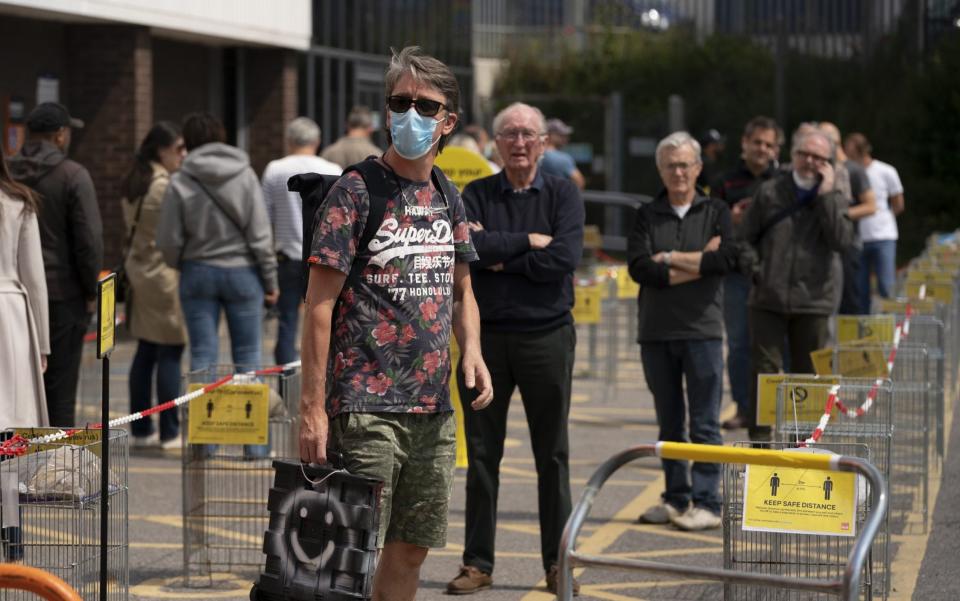Most people infected with coronavirus never show symptoms


The vast majority of people who contract coronavirus never show any symptoms, the first analysis of antibody tests by the Office for National Statistics (ONS) has shown, leading to fears the new test, track and trace programme will not work.
Under government plans, those showing symptoms are required to self-isolate and be tested while the NHS app will inform people who have been in close contact so they can also quarantine.
But new figures show 70 per cent of people testing positive for the virus do not have symptoms at the time of their test, or in the week before or after. Just 21 per cent reported symptoms on the actual day of testing.
Likewise for people who reported a symptom on the day of the swab test, only 2.6 per cent were actually found to have coronavirus.
Latest government testing figures also show that just 1.5 per cent of people are currently testing positive for the virus even though most are reporting symptoms.
The findings suggest that the government’s test, track and trace policy will fail to pick up at least seven in 10 cases and most people who suffer symptoms will not actually have the virus.
Commenting on the new figures, Prof Kevin McConway, Emeritus Professor of Applied Statistics, The Open University, said: “Most people who tested positive, about 70 per cent of them, did not report any symptoms at all.
“There here are potential implications for the effectiveness of tracking and tracing the contacts of people with symptoms, if high numbers of infected people don’t actually have symptoms anyway, or if many people with symptoms don’t actually have the infection.”
The results are based on the 885 individuals who took part in the ongoing Covid-19 Infection Survey run by the ONS and University of Oxford. Peter Benton, Director of Population and Public Policy Operations at the ONS said, that it was crucial to continue social distancing if so many people are infected without realising.
“We don’t know what that means about whether they are infectious, but my advice would be that if it is the case that 70 per cent of people who test positive are asymptomatic then it’s important to continue social distancing.”
The new results also show that 6.78 per cent of the population has tested positive for the virus, suggesting one in 15 people has been infected in England and Wales or nearly 3.8 million people.
It means that infection has around a one per cent average mortality rate, which is close to the 0.9 per cent estimated by Imperial College in March.
Separate ONS testing from 10,000 households suggests that between May 11 and May 24 an average of 133,000 people had coronavirus at any given time. The number of new infections is currently at 54,000 a week or nearly 8,000 a day meaning that one in 1,000 people will be infected every seven days.
Prof Daniel Altmann, Professor of Immunology, Imperial College London, said: “The level of infections in the community continues to rumble along at a low level.
“In terms of assessing your behaviour and risk-management as we shift out of lockdown, this means that, on average, every time you’re in a crowd of 400-500 people (such as a rush-hour tube platform), one person may be unknowingly shedding virus.
“You may want to keep some distance in case they’re the person pressed right up next to you.”
Experts said the new results showed that there had not been a hidden iceberg of infections, and certainly not enough in the community to build herd immunity without a vaccine.
However Sir Patrick Vallance warned that there was still a risk of infection in the community and that the country should be prepared for local outbreaks.
“Numbers are coming down at the moment but they are not coming down fast,” he told the daily press briefing. “We are in a fragile state.
“It’s worth remembering that we still have a significant burden of infection, we are still seeing new infections everyday.
“There is not a lot of room to do things and things need to be done cautiously step by step and monitored and the test and trace system needs to be effective to manage that."

 Yahoo News
Yahoo News 